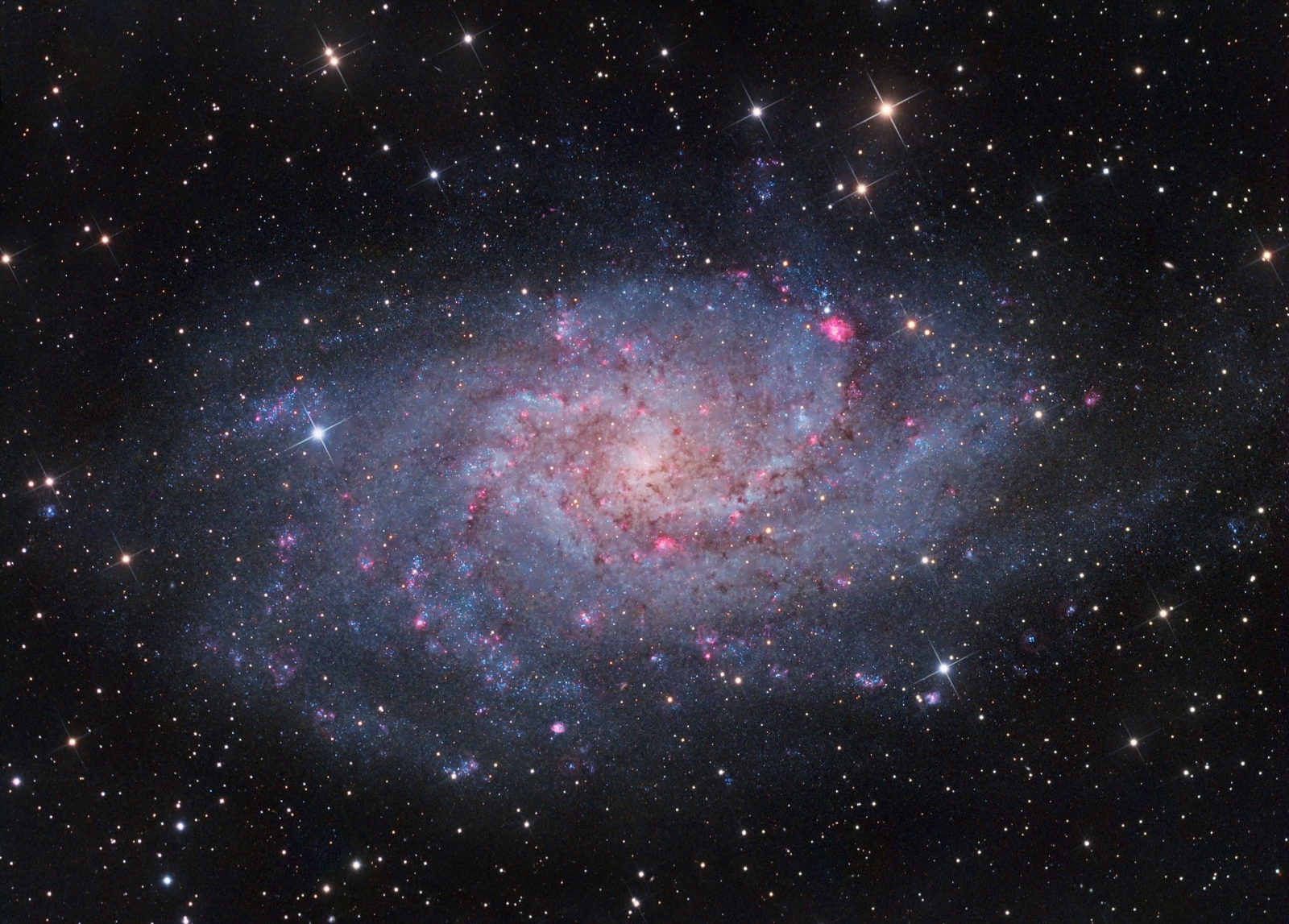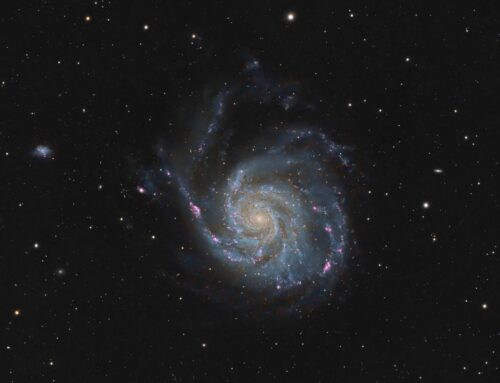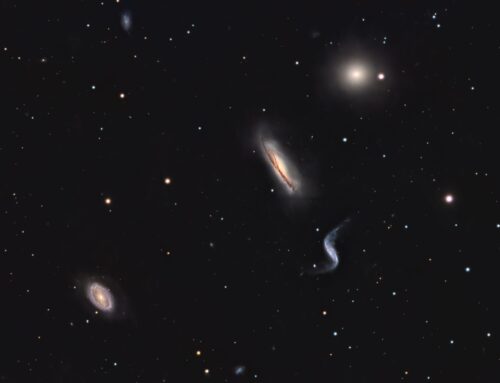M33, Triangulum Galaxy
Click image for full size version
December 12, 2015, Collaboration with Terry Hancock, featured in Cosmic Pursuits, Dec. 30, 2015
M33, the Triangulum Galaxy, is one of the closest large galaxies to Earth. It’s visible to the naked eye in a dark sky, and is a fine sight in a large telescope. It lies in the constellation Triangulum around 2.5 million light years distant and has a diameter of around 60,000 light years. Because of its size and relative closeness to us, this galaxy displays a wealth of detail in photographs. Even through the eyepiece some of the brighter knots of star clusters and glowing nebulae stand out enough that they were given separate catalogue numbers. In making this image a hydrogen alpha filter was used to capture the deep red light emitted by nebulae in M33. These structures are similar to our Milky Way’s Orion Nebula. The image also highlights the star-rich core of M33, encircled by dark dust lanes.
Terry Hancock and I collaborated to make this image. Terry acquired all the colour and H-alpha data and I collected the luminance data. Each of us produced several versions of the image, which were then blended to produce this result.
Tekkies:
Colour and H-alpha data acquired with 130 mm TMB refractor and QHY9 camera. Luminance data acquired with 250 mm ASA reflector operating at f/6.8 and SBIG STL-11000 camera. Processed with Registar, PixInsight and Photoshop.
12x15m R, 16x15m G, 16x15m B, 12x15m Ha and 55x15m L (total 29hr 5m).
Terry and I each produced several versions of the image using our typical workflows, me using PixInsight and Terry using Photoshop. These images were blended to produce the final result. Resolution is approximately 1 arcsecond per pixel.







One of my personal Favorites, great work and thanks for sharing.!!
Mine too!